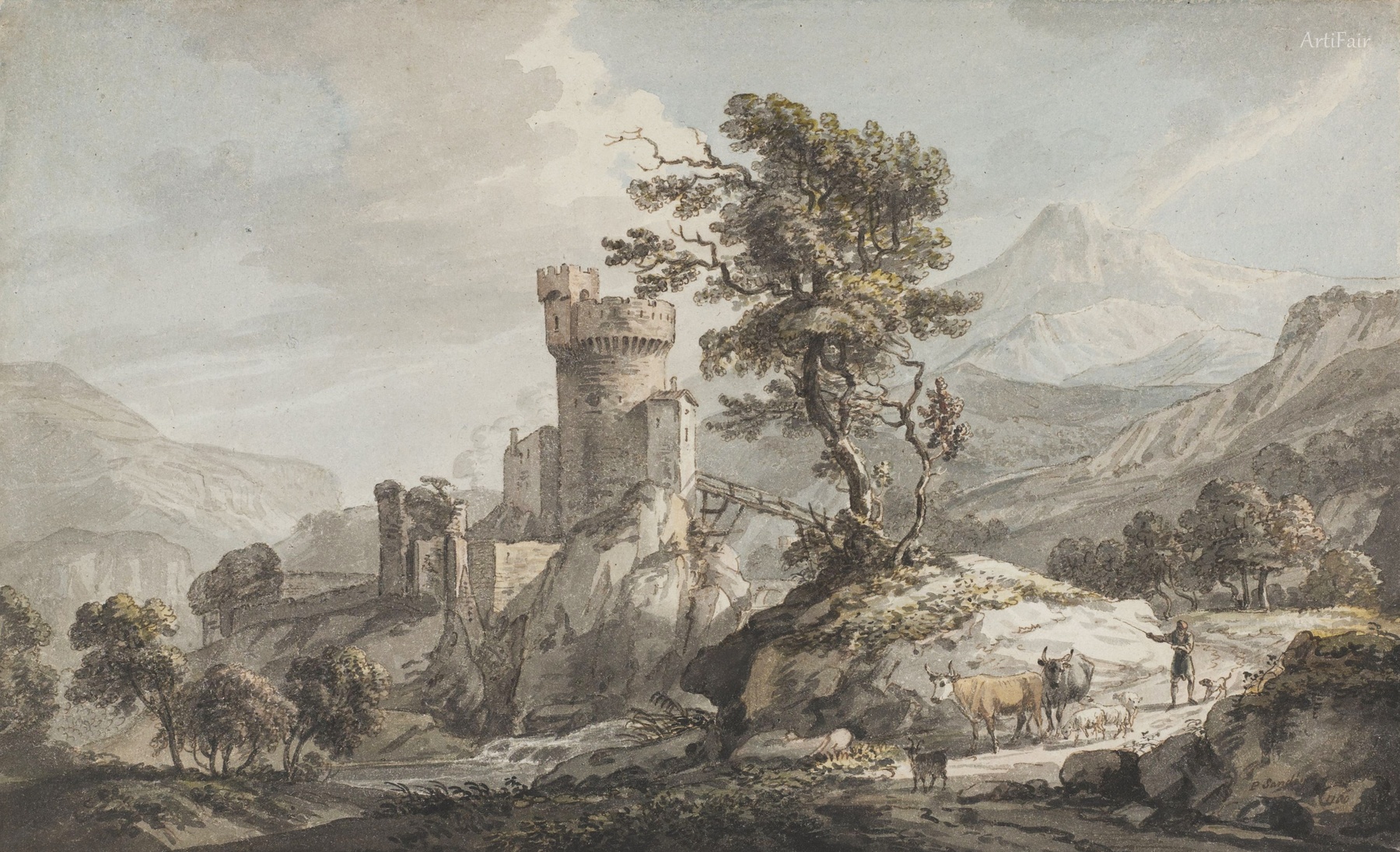
Art Appreciation
This watercolor landscape reveals a tranquil yet dramatic scene of nature intertwined with ancient man-made structures. A castle ruin stands proudly on a rocky outcrop, its round tower and crumbling walls suggesting a story of past grandeur and the slow reclaim of nature. Nearby, a tall, wise tree bends slightly, weathered yet full of life, its branches seeming to sway in an unseen breeze. In the foreground, a shepherd tends to his cattle, their quiet presence adding a gentle rhythm to the rugged scene. The cool, muted palette of greys, greens, soft browns, and pale blues creates a soothing yet mysterious mood, inviting a sense of contemplation and nostalgia. The loose brushwork and delicate washes lend a softness that contrasts remarkably with the solid, enduring stone of the ruined castle, a poetic balance between fragility and permanence.
The composition flows dynamically from left to right, guiding the eye past rocky hills and trees through to distant peaks faintly veiled in mist. This layering evokes the vastness and timelessness of the landscape, while the inclusion of the shepherd and animals brings a human, pastoral touch that grounds the scene in everyday life. Painted in the mid-18th century, the work reflects a period when artists increasingly appreciated nature’s romantic and sublime aspects, signaling a departure from strict classical order towards a more emotive view of the landscape. It invites the viewer not just to see but to feel—the wind’s whisper, the earth’s rough texture, and the quiet resilience of both nature and history entwined.